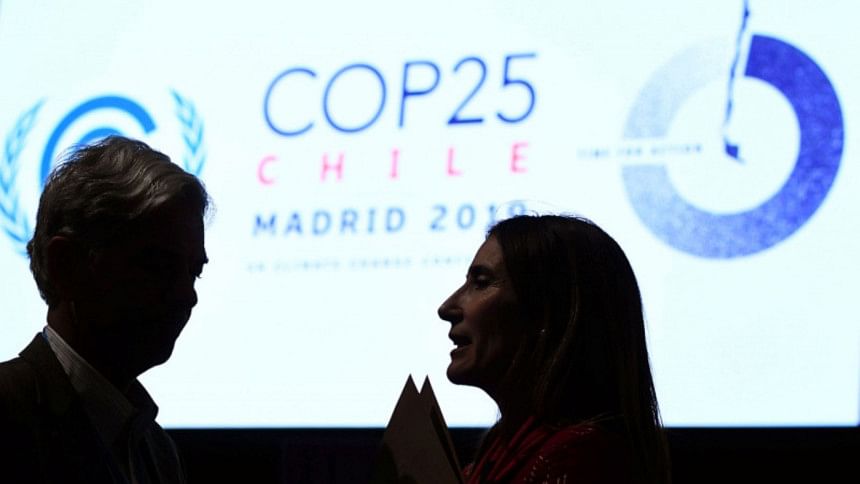COP25: Another round of active inaction

The UN's longest-ever climate negotiations, continuing non-stop for almost two extra days, drew to a close on December 15 with not much to celebrate. Nations on both sides—developed and developing—held hardline positions resulting in utter disappointment, so expressed grudgingly by the UN Secretary General himself. Countries failed to agree on many of the sought-after outcomes, including rules to set up a global carbon market, steps to mobilise dedicated funding for loss and damage (L&D) and mobilisation of long term finance (LTF) for the most vulnerable.
First, there is the most vital issue of ambition to reduce emissions in order to live in a world well below 20C above the pre-industrial level, which saw no real move ahead. Countries were divided on focusing either on the pre-2020 or a post-2020 ambition. Developed countries stressed on enhanced post-2020 emissions pledges in the new nationally determined contributions of parties. While major developing country emitters like Brazil, China and India opposed any obligation to submit enhanced pledges, arguing that the focus should be on meeting first the pre-2020 pledges made by developed countries earlier. The former also made it clear they would not support strong language on raising ambition without a similar call for rich countries to provide adequate support, long promised to developing countries.
Against this bleak backdrop, about 80 countries have already signaled plans to enhance their climate pledges next year. Even as the talks fell into disarray, the EU agreed to a "climate neutral" target for 2050, joining 73 countries who have signed up to a similar goal. With the US withdrawal from the Paris Agreement (PA) still underway and without progressive ambition, as agreed under the PA by all including the major emitters from both sides of the aisle, the world is likely to experience at least an additional 30C of warming in the coming decades.
Second point is about the global carbon market stipulated under the PA. COP24 in Katowice last year could reach agreement on a rulebook for implementation of all issues except on Article 6 of the PA, which provides for creating a carbon market, among others. So, fixing its rules was the main remaining part of the Paris Rulebook, the nitty-gritty details of how such a market will operate. Here again, irreconcilable differences swayed any progress. Countries like Australia, Brazil, China and India insisted for a system allowing the carryover of Kyoto-era carbon credits as contribution to their mitigation pledges post-2020. However, other countries argued this would undermine the entire market system. As tensions peaked, a group of 31 countries led by Costa Rica signed up to the "San Jose principles", a set of standards for ensuring the integrity of the global carbon market. Another issue of rancor was related to what share of proceeds from emissions trading will be forwarded to the Adaptation Fund. Countries have not settled on how much, with options for two percent of proceeds (generally supported by developed countries), or five percent (supported by developing countries).
The real fight lay in whether a similar "share of proceeds" for adaptation should be set up for bilateral trading under PA Article 6.2. Not applying a similar levy could mean bilateral trading will enjoy preference over the global carbon market under Article 6.4, reducing in turn the money that will go to Adaptation Fund.
Third, the L&D agenda under the Warsaw International Mechanism (WIM) could not progress much except for the establishment of the Santiago Network. The main agenda on this issue was to review the WIM Terms of Reference, which emphasised the mobilisation of dedicated resources for L&D. Another technical but important argument was whether the WIM should be put under the PA or the general Conference of Parties (COP). The US pushed strongly to keep it under the PA, as it will continue to belong to the COP, although several country groups made it clear that the WIM should be governed jointly by the COP and the PA. In terms of any money for L&D, there has been no progress made. The developed countries led by the US vehemently opposed it.
Fourth, there was no positive outcome on long term finance (LTF), another perennial crunch issue. The promised new climate finance goal to be met by 2025 under the PA has to be higher than the pledged USD 100 billion a year by 2020. Further push back from rich countries on commitments to provide LTF to the most vulnerable symbolised the intractable tension between the needs of developing countries to address climate change and the opposition of a few major economies. Actually, the issue that continues to mar the mutual trust is the persistent opposition for the last two decades by many developed countries that hinders agreement on a definition for climate finance. This could plug the loopholes of double/triple counting of the same money, or the repackaging of development assistance as climate finance. Continued lack of such an agreed understanding results in a Himalayan gulf between the claimed delivery and actual receipts in developing countries.
In the end, there is little gain in few non-political issues such as the approval of a new Gender Action Plan and a work plan for the Local Communities and Indigenous Peoples Platform. Indigenous and human rights groups have long sought for new mechanisms to ensure that supported projects do no harm to local communities. There was no strong commitment on this either. Their demand for setting up an independent grievance/redress mechanism fell on empty ears.
The way forward
Months before and throughout the talks, youth activists led by Greta Thunberg highlighted the disconnect between the negotiations and the demands of science, and the affected communities the world over. Unlike Paris, the activism resulted in a lackluster impact. Hope the youth activists will consider the lessons learned this year.
One silver lining is that under the new Green Deal for Europe, the EU Commission plans to enhance the bloc's 2030 target to at least 55 percent reduction. All member states but Poland also committed to achieve carbon neutrality by 2050. The UK is one of several European countries which supported the "San Jose principles" and being a member of the high ambition coalition pushed hard for a clear call for enhanced climate plans in 2020. With so little agreed at COP25, the stakes are much higher for the Glasgow talks next year.
Let me end by referring to a recent statement of Dr Saleemul, who has attended all the 25 COPs since 1995—unless Glasgow promises to turn into an "Action COP", he may consider not joining any more. Let us only hope that under leadership of the progressive UK, COP26 goes beyond the process of "active inaction", unlike some of the COPs in the past.
Mizan R Khan is Deputy Director, International Centre for Climate Change & Development (ICCCAD) & Program Director, LDC Universities' Consortium on Climate Change (LUCCC).

 For all latest news, follow The Daily Star's Google News channel.
For all latest news, follow The Daily Star's Google News channel. 



Comments